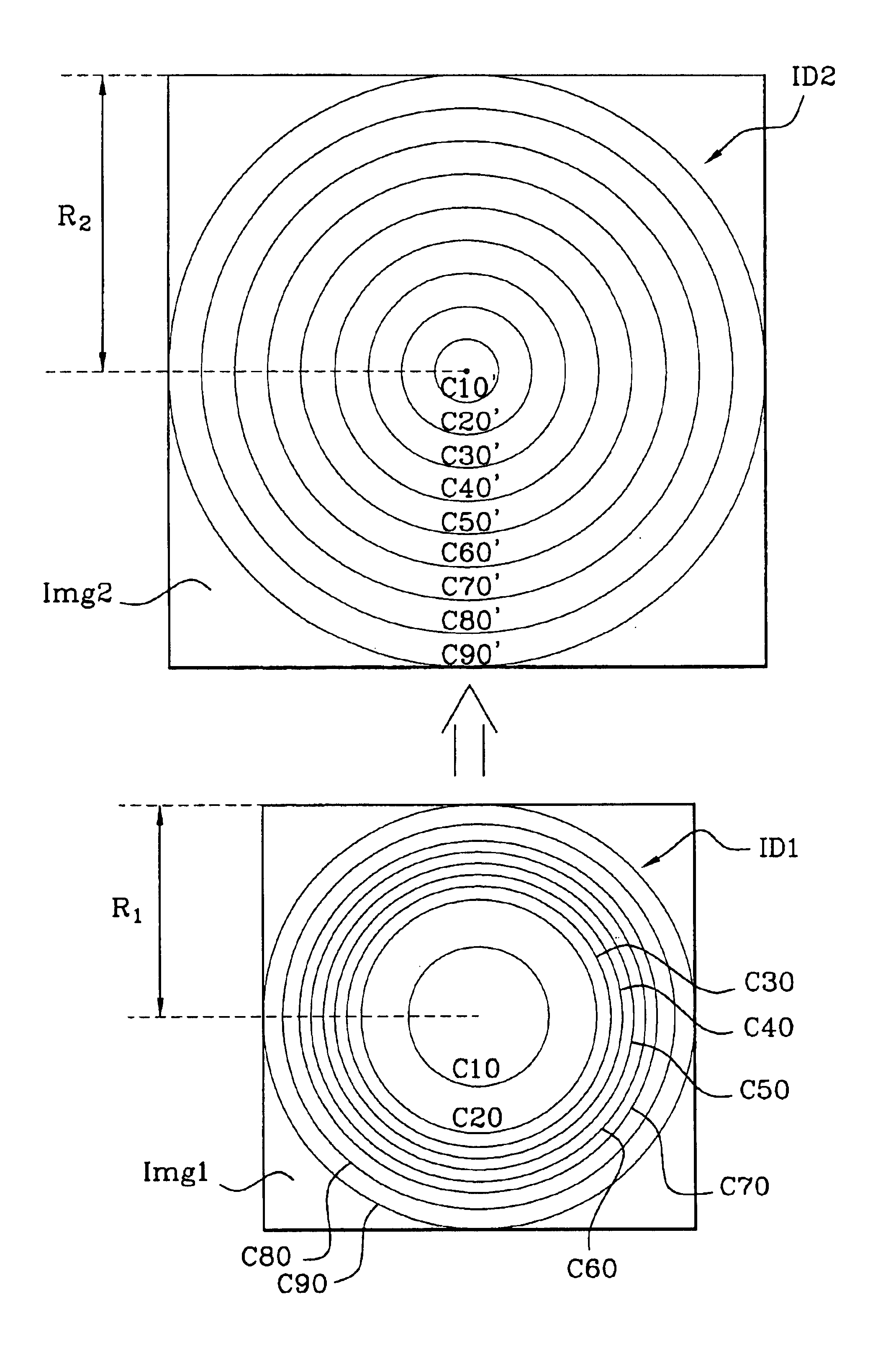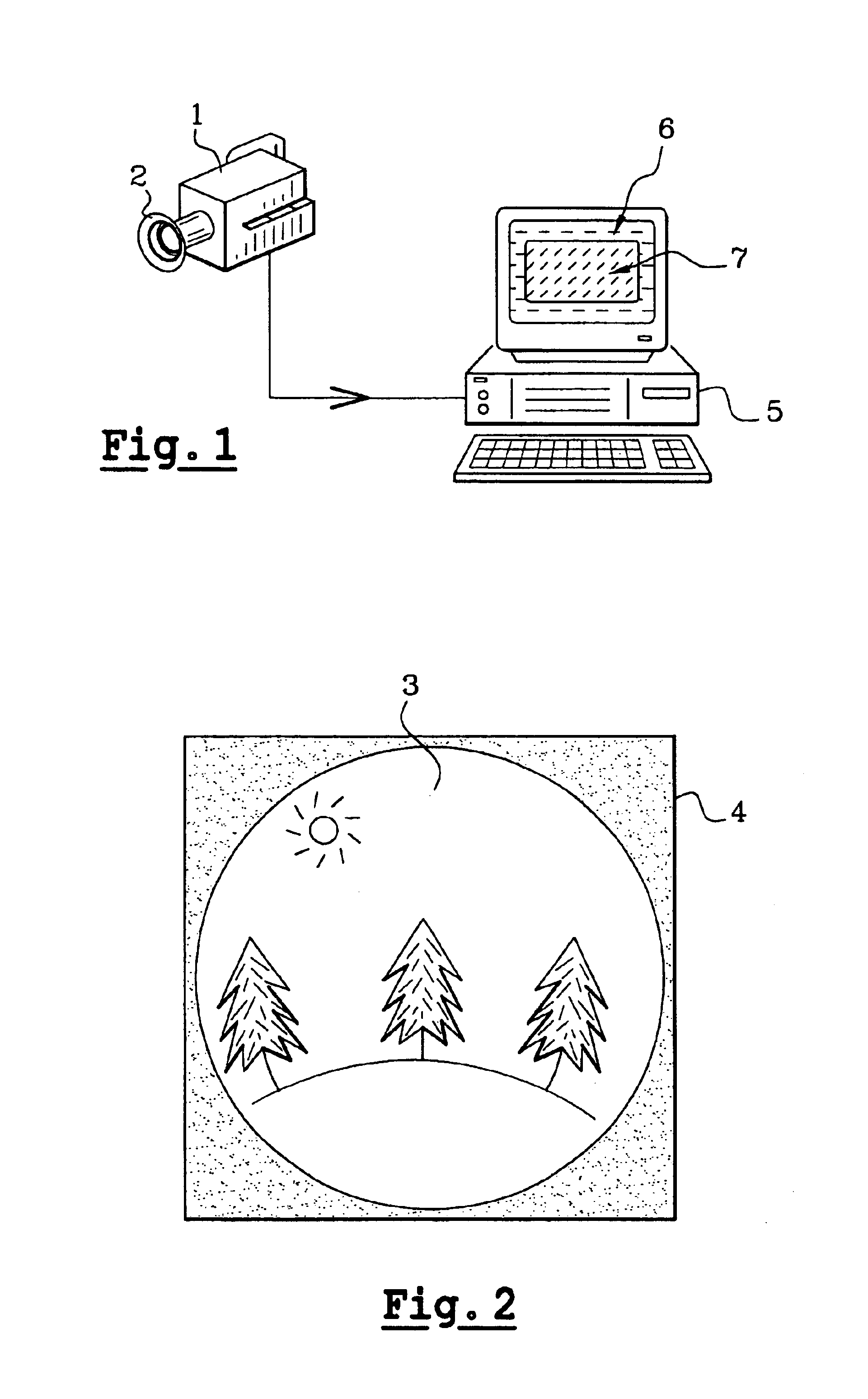Method for capturing and displaying a variable resolution digital panoramic image
a digital panoramic image and variable resolution technology, applied in the field of digital panoramic images and displaying panoramic images, can solve the problems of granulosity of images, image sensor is generally much lower, and digital enlargement has the disadvantage of being limited by resolution
- Summary
- Abstract
- Description
- Claims
- Application Information
AI Technical Summary
Benefits of technology
Problems solved by technology
Method used
Image
Examples
first embodiment
Apodizers are optical systems well known by those skilled in the art, used to change the energy distribution (amount of light) of a source of light at the pupil. They are particularly used to level out the energy in a laser beam or even, in the field of photography, to limit the diffraction of light through the lenses. Using an apodizer as a filter is also well known, to cover the aperture of an optical instrument in order to remove the secondary rings of a diffraction pattern. When it is desirable to separate the images of two neighbouring pin-point sources, these secondary rings are a nuisance and reduce the resolution. “Apodization” can thus be performed, that is these secondary rings can be removed by placing an adequate filter in the plane of the pupil.
Here, the idea of the present invention is to use an apodizer for a different purpose: the principle of the apodizer is used to control the angular distribution of a panoramic objective lens and to obtain the non-linearity sought...
second embodiment
FIG. 18 schematically represents a non-linear objective lens 40 using a distorting mirror. The objective lens 40 comprises, at input, a divergent optical group consisting, for example, of the three lenses L1, L2, L3 described above, defining the field angle of the objective lens. Opposite the optical group a plane mirror M1 is located which reflects the luminous beam onto a distorting mirror M2 of aspherical concave shape. The beam reflected by the mirror M2 is sent onto an image sensor 43.
In this embodiment, the irregularities of sphericity that the concave part of the mirror has determined the angular distribution function Fd sought for the intended application (distortion in the center, on the edges . . . ). The result obtained is equivalent to that of the optical system described above. Obtaining the distribution function Fd is within the understanding of those skilled in the art using computer-aided lens design tools which allow, in addition to designing lenses, reflecting surf...
PUM
 Login to View More
Login to View More Abstract
Description
Claims
Application Information
 Login to View More
Login to View More - R&D
- Intellectual Property
- Life Sciences
- Materials
- Tech Scout
- Unparalleled Data Quality
- Higher Quality Content
- 60% Fewer Hallucinations
Browse by: Latest US Patents, China's latest patents, Technical Efficacy Thesaurus, Application Domain, Technology Topic, Popular Technical Reports.
© 2025 PatSnap. All rights reserved.Legal|Privacy policy|Modern Slavery Act Transparency Statement|Sitemap|About US| Contact US: help@patsnap.com



